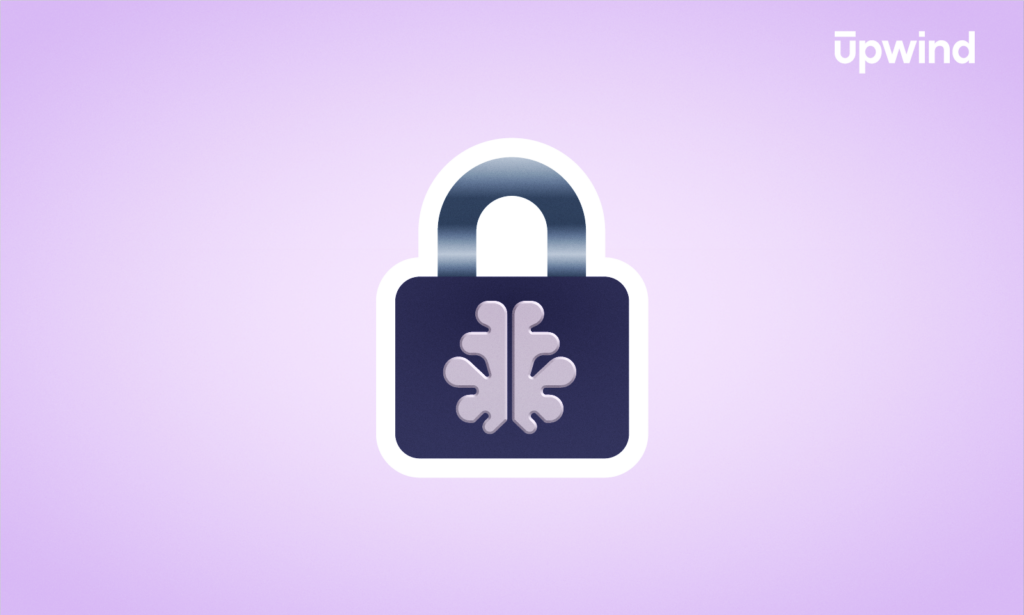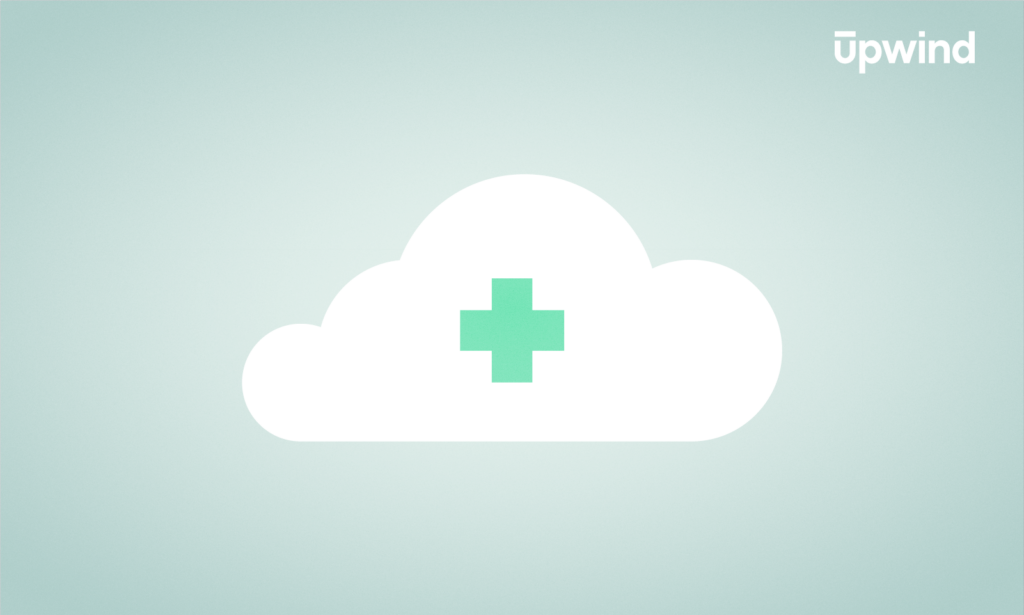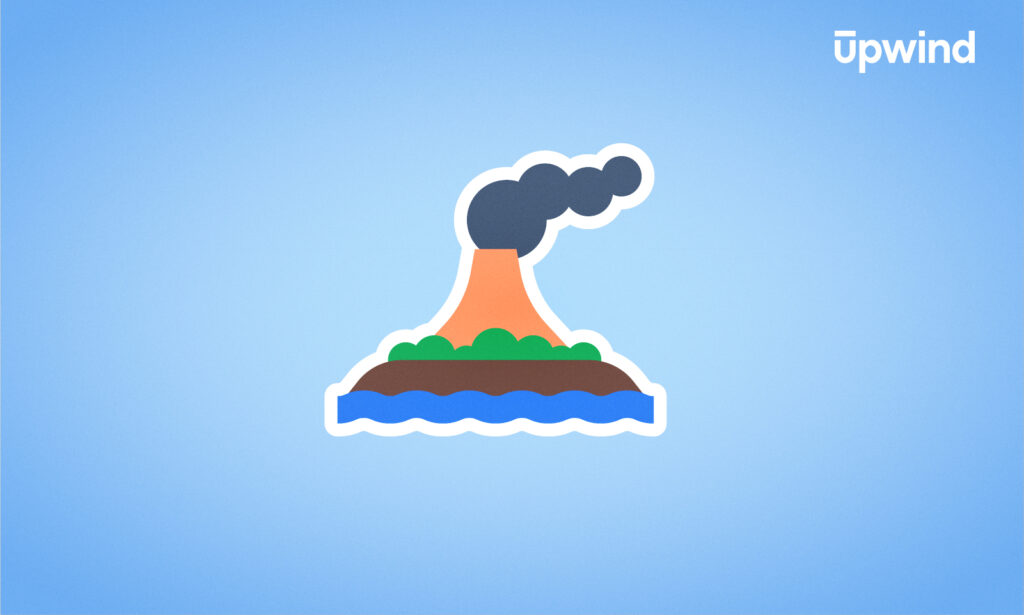
Cloud security is evolving so rapidly that one Forbes reporter claimed it is moving like goalposts on wheels. The rapid pace of innovation paired with a tightening regulatory landscape, new technologies like AI running in the cloud, and the increasing cybersecurity risks that come with expanding attack surfaces make it difficult for organizations to ensure comprehensive protection for their infrastructure and applications.
In this article, we will dive into CDR tools and the role they play in securing the cloud, including a deep dive into key features of CDR tools and what to evaluate when choosing a solution.
A Refresher: What is Cloud Detection and Response (CDR)?
Cloud detection and response (CDR) tools help companies identify and stop security threats in cloud infrastructure including virtual machines (VMs), serverless architectures, and containers using:
- Monitoring
- Prioritizing threats by severity
- Automating or manually countering threats
Runtime and Container Scanning with Upwind
Upwind offers runtime-powered container scanning features so you get real-time threat detection, contextualized analysis, remediation, and root cause analysis that’s 10X faster than traditional methods.
CDR has given rise to tools to secure cloud functions predicated on the reality that cloud deployments and their threat levels differ from on-premises and hybrid architectures. CDR specifically addresses cloud-native security challenges, which traditional non-CDR tools like endpoint detection and response (EDR), extended detection and response (XDR), runtime application self-protection (RASP), or network detection and response (NDR) are not designed for.
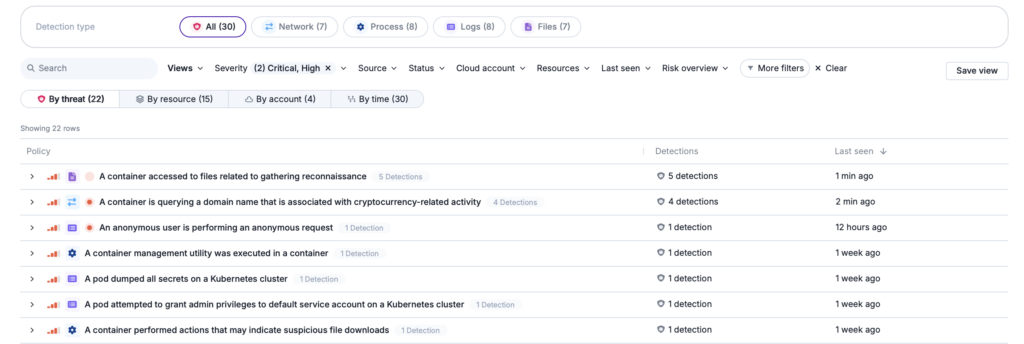
That said, CDR can feel like an outlier in a field of detection and response tools. Because its features are often part of the more comprehensive modern CNAPP, some even argue it doesn’t exist.
While there’s overlap, CDR tools that focus on cloud challenges provide a stronger security posture around issues in cloud environments, offering security across cloud APIs, flow logs, and workload.
Benefits of CDR for Cloud Threat Prevention
As a stand-alone tool, CDR arms teams with security for scaling cloud adoption in a climate of increased cloud threats.
The cloud security industry will grow more than 13% from 2023 to 2030, concurrent with increasing cybersecurity risks and adoption of the cloud.
There is no shortage of security frameworks and tools available to meet the current challenges. But differentiating them (and keeping up) can feel like a job in itself. CDR is a newcomer that first circulated in 2017, meant to cover holes emerging in previous frameworks that didn’t account for the brave new cloud-first landscape.
What does a CDR tool do differently? Here are the basics:
CDR focuses on cloud
From applications to workloads and data, CDRs are specifically designed for cloud environments.
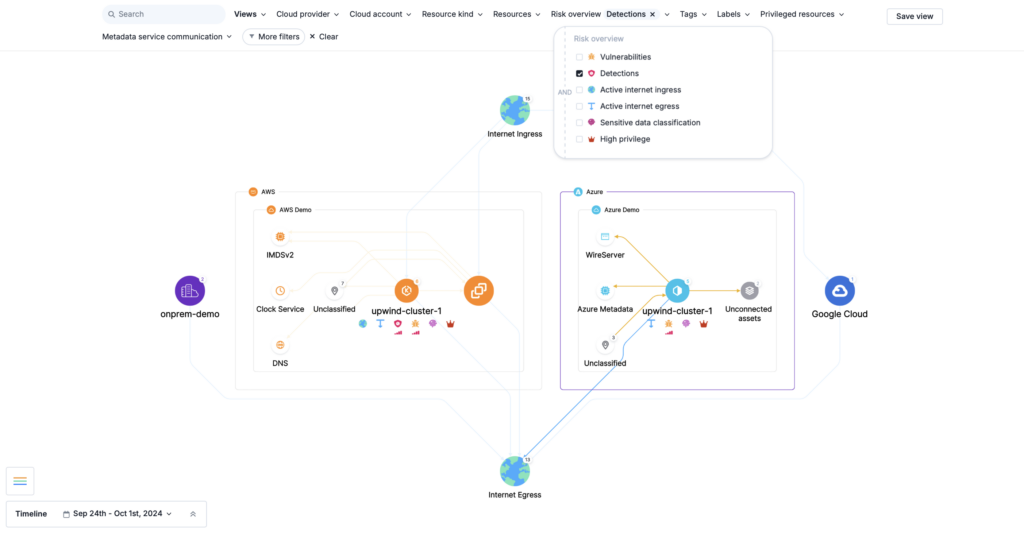
They include threat detection and visibility in multi-cloud environments, with the added complexity of APIs and services. They include protection for containers, virtual machines (VMs), serverless platforms, and containers. They also protect cloud storage nodes, networking, and Kubernetes clusters.
CDR detects issues in cloud-specific ways
Leaving network approaches behind, CDRs look at vulnerabilities unique to the cloud, like ephemeral infrastructure, distributed services, and flexible scaling models.

Behaviors are important to how a CDR adds value specific to cloud detection. CDRs must recognize transient anomalies, lateral movement across cloud services, data flow deviations, and other patterns that weren’t relevant in a traditional architecture.
Incident response is fine-tuned to cloud environments
CDRs monitor cloud service APIs and network traffic. It’s all designed for system components that clients can manage within the cloud’s shared responsibility model.
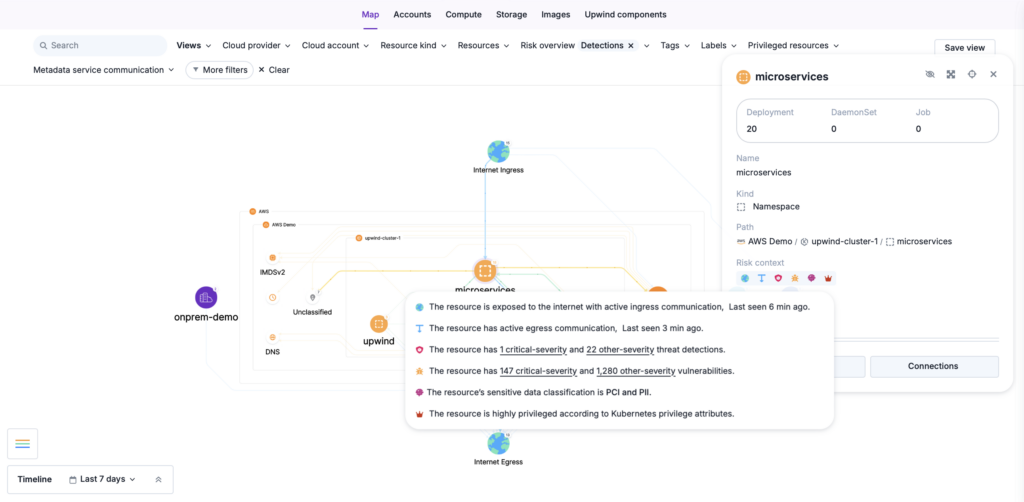
Cloud-native incident response gives teams granular control over factors like user permissions, allowing them to enact instant role changes and real-time service interaction audits.
CDR integrates with other cloud security measures
For example, a CDR may integrate with a CWPP, which focuses on workloads like containers, allowing the CDR to automatically isolate threats detected in real-time.
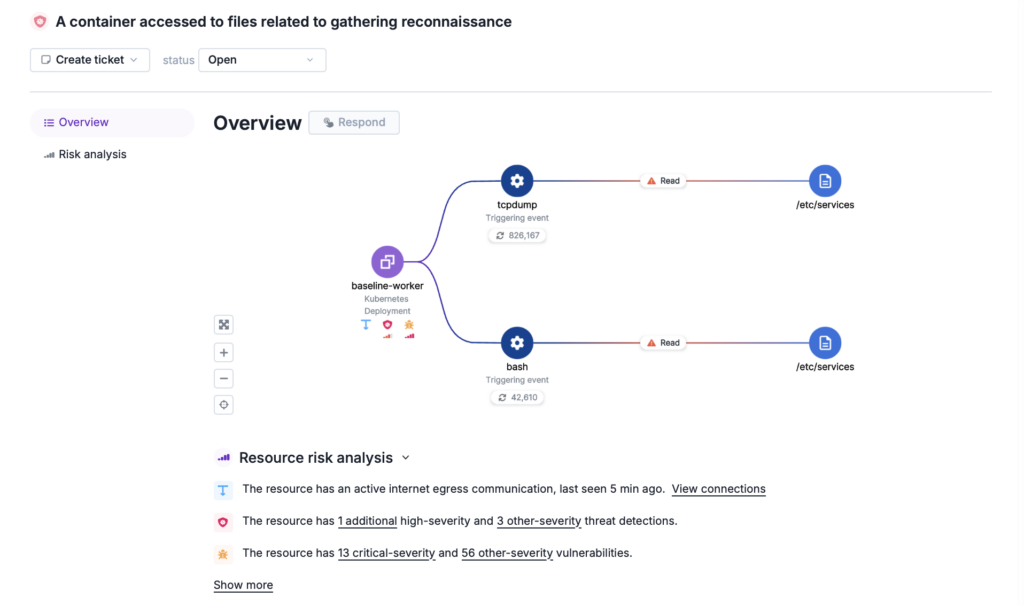
Teams have more control over which integrations they allow with focused solutions like a dedicated CDR, while consolidated platforms, including CDR may include features and benefits of CWPP and CSPM alongside CDR.
Traditional security solutions often struggle to fully address the dynamism and dependencies of the cloud, and therefore, they’re less-than-ideal tools with high levels of false alerts.
Is CDR the Best Way to Protect Cloud Workloads?
CDR is an important component of cloud security, but there are many ways to protect cloud workloads, and the best solutions work in tandem to provide holistic coverage of all the parts of a business with cloud operations.
Here are a few key points to keep in mind:
- CDR is built for cloud environments:
It’s designed to address cloud-specific challenges, such as multi-tenant setups and dynamic resources, providing comprehensive monitoring and threat detection across your cloud workloads, networks, and services. - CDR has several advantages that may overlap with newer CSPM and CNAPP tools:
- Cloud-specific threat intelligence
- Deep integration with other cloud security tools like CWPP
- Faster detection and response times for threats
- Continuous monitoring and automated threat detection
- CDR complements other security tools — it doesn’t replace them:
While CDR enhances your overall security posture, you’ll still need to maintain proper configurations, access controls, and encryption.
What are the specific features of CDRs?
CDR tools respond to threats in the cloud environment beyond the software development lifecycle. For companies, that means benefits like the following:
- Real-time threat detection: Continuous monitoring and analysis of cloud activities to identify potential threats as they occur. That can include remote code execution, API security incidents, lateral movement, or privilege escalation.
Upwind monitors API and network traffic in real time to stop threats like cloud heists.
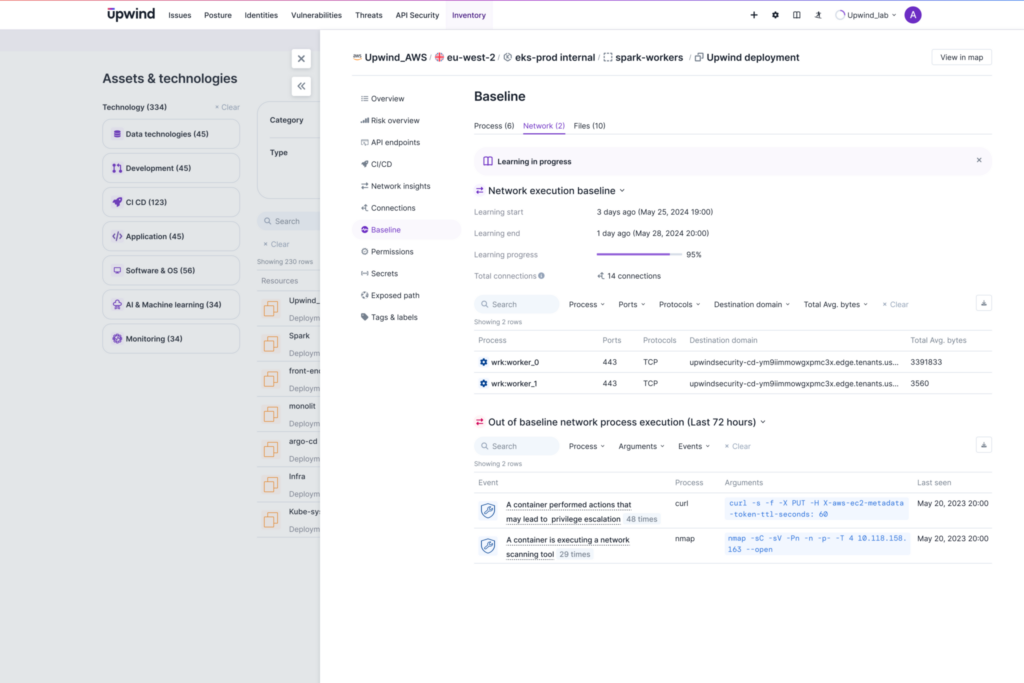
- Automated response capabilities: Ability to automatically isolate affected systems, taking remediation actions to prevent further damage.
- Threat intelligence integration: Incorporation of up-to-date information about the latest adversary behaviors and tactics.
- Multi-cloud support: Ability to work across cloud platforms, including public, private, and hybrid cloud infrastructures.
- Integration with existing security solutions: Compatibility and ability to work alongside other security tools in the organization’s ecosystem.
- Scalability: Capability to handle increasing amounts of data and resources as the cloud environment grows.
- Continuous workload protection: Monitoring and securing cloud VMs, containers, and serverless functions.
- Evidence-based incident response: Providing detailed information for investigation, including status code support and granular attack-vector identification.
- Cross-account threat detection: Capacity to identify malicious activities that span multiple cloud accounts or services.
- 24/7 threat hunting: Ongoing proactive search for hidden threats in the cloud environment.
These features are designed to address the unique security challenges of cloud environments and provide comprehensive protection across various cloud services and architectures.
CDR Vs. Related Cloud Security Tools
While the features of CDR may overlap with other solutions, CDR tools focus solely on cloud threat detection and response. Here’s a quick dive into the different approaches used by related security products compared to CDR.
1. Cloud Security Posture Management (CSPM)
- Differentiation: While CSPM focuses primarily on configuration and compliance, CDR focuses on real-time detection and response to active threats or attacks within the cloud.
2. Cloud Workload Protection Platform (CWPP)
- Differentiation: While CWPP secures workloads through vulnerability scanning and threat detection, CDR can respond to detected threats across the cloud infrastructure, not just workloads.
3. Cloud Access Security Broker (CASB)
- Differentiation: CASB controls cloud service access and policy enforcement, while CDR manages threat detection and response.
4. Cloud-Native Application Protection Platform (CNAPP)
- Differentiation: CNAPP is a comprehensive platform that offers broader protection across cloud-native applications, while CDR hones in on real-time, cloud-specific threat detection.
5. Extended Detection and Response (XDR)
- Differentiation: XDR aims to detect and respond to threats across multiple environments (on-premises and cloud), whereas CDR specifically focuses on cloud-only environments.
6. Endpoint Detection and Response (EDR)
- Differentiation: EDR is limited to endpoint security. CDR handles the broader cloud environment, encompassing workloads, databases, and containers.
7. Security Information and Event Management (SIEM)
- Differentiation: SIEM is broader and often used for logging and alerting across entire environments (including the cloud), while CDR responds to threats in real-time, specifically within the cloud.
8. Identity and Access Management (IAM)
- Differentiation: IAM is about managing who has access to resources, while CDR focuses on detecting and responding to unauthorized or malicious activity once it occurs.
Runtime and CDR with Upwind
Upwind offers runtime-powered CDR features like real-time threat detection, contextualized analysis, remediation, and root cause analysis that’s 10X faster than traditional methods.
Is Upwind a CDR?
Upwind is a CDR, and its CDR capabilities are part of the comprehensive Upwind CNAPP. Upwind Cloud Baselines help you automatically detect abnormal events in the cloud beyond the traditional approach of cloud detection and response tools.
With activity-based detection, cloud detection gets an upgrade that goes beyond typical signature-based detections. With a real-time understanding of layers 3, 4, and 7, Upwind sets a baseline for typical activity so you can respond to abnormal activities that are potentially malicious.
Upwind Secures Your Entire Cloud
Upwind believes in a comprehensive system with components of all the best security features to reduce risk across your entire cloud ecosystem. Upwind includes CDR features, but also broader solutions to secure your workload.
Want to see how you can coordinate all your cloud security from a single platform? Schedule a demo today.
FAQ
What is endpoint detection and response (EDR)?
EDR is a cybersecurity technology that detects threats on endpoints like computers, servers, mobile devices, and networked devices. Like CDR, EDR’s basic components include monitoring, threat detection, alerts, and response capabilities. EDR is a key technology for identifying cyber threats like ransomware attacks, but it isn’t focused on the unique and specific aspects of cloud computing.
What’s the difference between cloud detection and SOC?
The security operations center (SOC) is a team that monitors and responds to security incidents. They manage an organization’s security posture, using tools including CDR, but also SIEM, EDR, and others. A SOC broadly surveys the organization’s security, while CDR tools focus on cloud-native security.
What’s the difference between CDR and NDR?
CDR and NDR monitor and secure different components of an organization’s tech infrastructure. CDR is specially designed for the cloud, including Infrastructure as a service (IaaS), software as a service (SaaS), and platform as a service (PaaS).
Network detection and response (NDR) is designed to monitor the network layer across cloud, hybrid, and on-premises environments.
